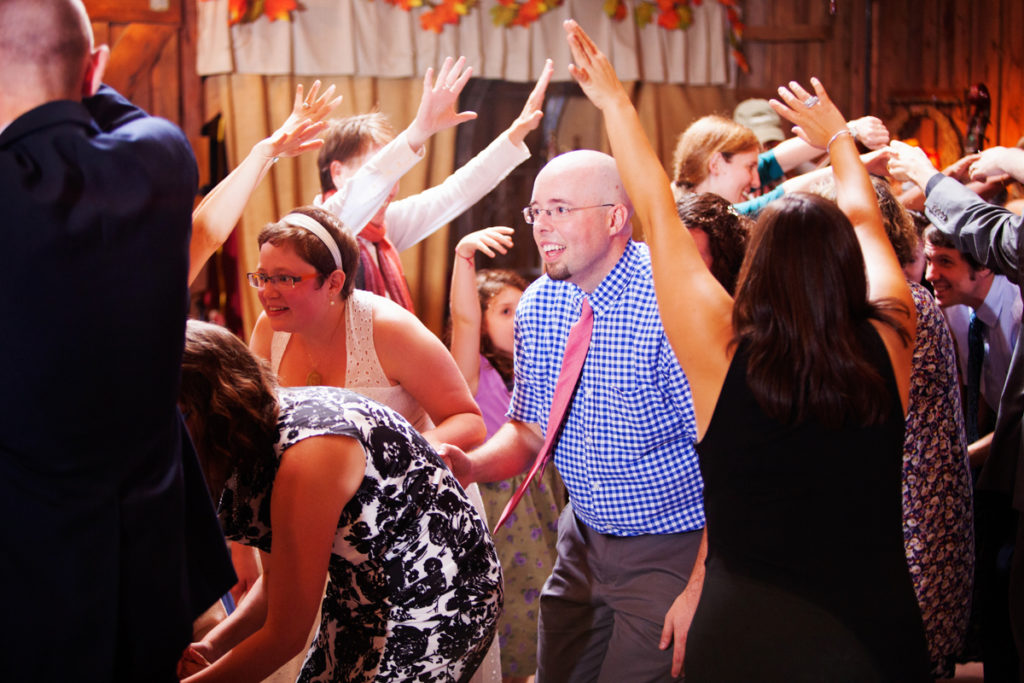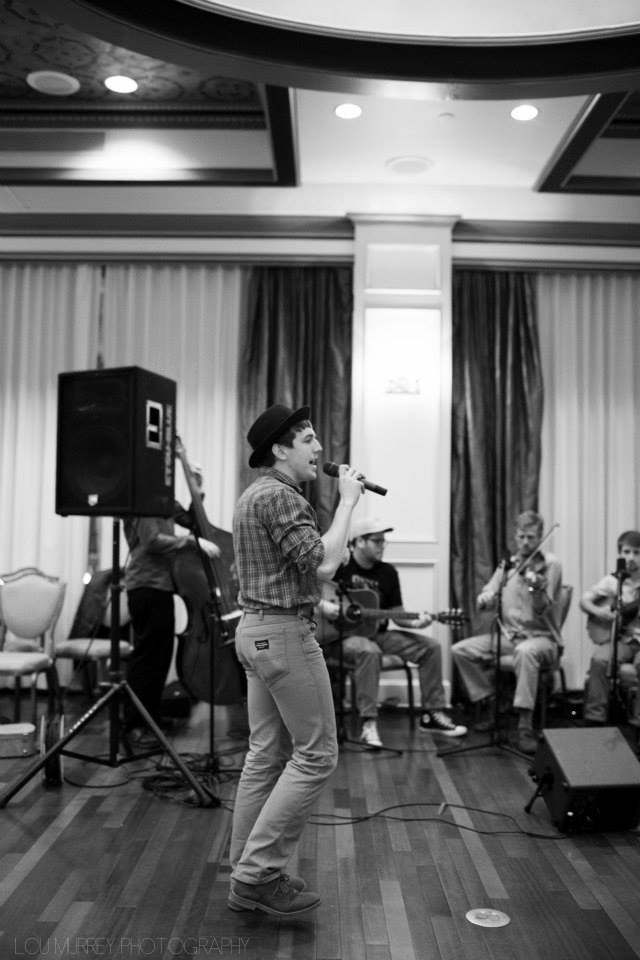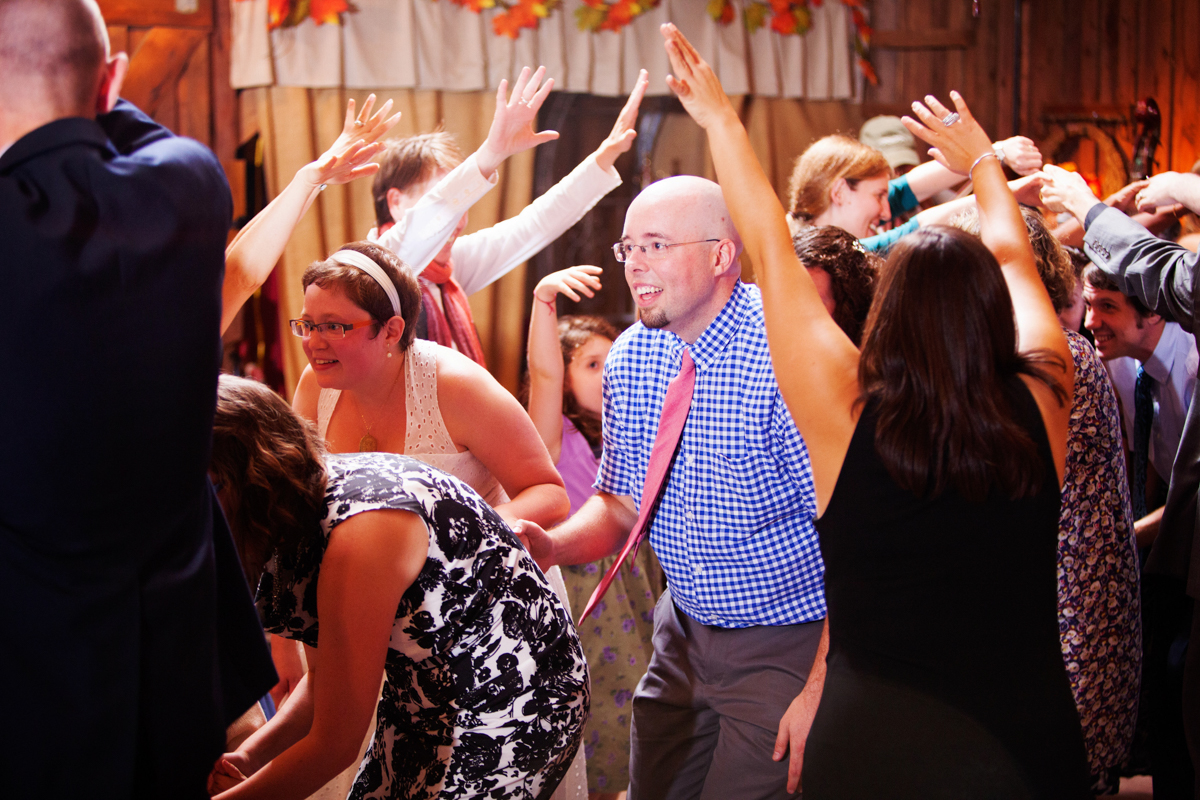I’ll never forget how I felt the first time I went to a real square dance.
I had been studying Spanish in my apartment with my best friend in college when her phone rang. Our music community in Johnson City, Tennessee, was incredibly strong and connected at that point. Word was traveling down the iPhone telegraph that a caravan of folks would be leaving from Mary Street heading toward Burnsville, North Carolina, for a square dance.
I had been a diligent and dedicated student all through college and the thought of abandoning a homework assignment was enough to send me into an anxiety attack. Excitement and peer pressure got the best of me, however. It was the only zero I ever received on an assignment, but the experience of the dance was well worth the failing grade. Perhaps it was that the world seemed exceptionally gloomy on that evening (the country was a few days into a government shutdown and public tension was high), but the square dance magically transported us all away from the problems of society for a moment. We were transfixed in do-si-dos, swings, and promenading through a sea of mesmerizing fiddle and banjo tunes.
The next morning, I began wondering just how in the world something so free and happy could have dwindled away from so many of our Appalachian communities. Dances had once been centerpieces of mountain society. They served as social gatherings where news could be swapped, courtships could form, and musicians could test their chops. Today, it is safe to say that square dancing is in a revival of sorts. There are numerous workshops and classes offered throughout the mountains to teach people to dance and to call. There are also young folks who are working to bring square dancing back to into communities.
I’ve been an advocate of dancing since that first night in Burnsville, and I’m hoping this post will encourage you to get out on the dance floor yourself. I’m sure many of you are reading this and thinking to yourself: “I haven’t square danced since elementary school!” or even “I’ve never square danced in my life!” On that note, I think it’s a real shame that school children don’t get to experience the Virginia Reel anymore in gym class.

If your interest has been piqued but you’re still not sure about swinging and promenading, then today – National Square Dancing Day! – is the perfect time for this “Top Ten Things You Didn’t Know About Square Dancing” list. Hopefully this blog post will give you that final nudge to find a dance near you. Read the list and then get your dancing shoes on (see #3 below)!
1. It Ain’t All Squares
Square dancing developed long ago from a mix of English country dances and African American social dances. The typical formation is four couples in the shape of a square. However, all along the Appalachian Mountains it became popular to run square dance steps in large circle dances using as many couples as can fit on the floor. The Circle Dance often uses moves like the Right and Left Grand to continually have a dancer switch partners. This gives everyone a chance to dance with everyone and often breaks the ice for folks a little nervous about meeting others and asking them to dance.
2. Square Dances are Forgiving (Thankfully!)
There is often a fear by first-time dancers that they will look foolish because they don’t how to dance the moves correctly. This thought should never cross a dancer’s mind though. Square dance callers are always used to having beginners on the floor, and the job of the caller is to explain the dance in full until everyone is comfortable. These dances are welcoming spaces where more experienced dancers are always willing to help you learn the ropes, and if you do get all twisted up and turned around, nobody is going to mind. Square dances are not competitive sporting matches; rather, they’re a place to have fun. So stop worrying!
3. No Dress Code
The first time I invited a friend to what would be their first square dance, he looked puzzled and disappointed when he said, “I can’t. I don’t own any cowboy boots.” I politely explained that cowboy boots were not a requirement. Neither are gingham shirts, petticoats, or cowboy hats. Just as squares can be danced to modern music (see #5), the typical dress for dances has evolved as well. Jeans, slacks, and even yoga pants would be just as fitting for a square dance now.

4. Square Dances are for Everyone
Square dances, like most of country, old-time, and bluegrass music traditions, are often portrayed as homogenous scenes that lack any type of social diversity. However, square dancing is forward-thinking. Many dances today are called with gender neutral terms, and there is no scrutiny for dancing with partners of the same sex. There are numerous organizations worldwide working to create welcoming dance scenes such as the International Association of Gay Square Dance Clubs or the U.S. Handicapable Square Dance Association.
5. Square Dances are Everywhere
Just as you don’t have to dress country to dance, you don’t even have to live in the country to dance. Square dances are quite literally everywhere. They span the entire country from the historic Carcassonne dance in Kentucky to a thriving scene in Baltimore, Maryland. Though they are called different names, squares live on across the pond as well at Irish Ceilidh Dances or Scottish Country Dances.

6. Tune Up Your Fiddles or Synthesizer!
Square dancing is closely associated with fiddles, banjos, and country music. However, today square dances are performed to numerous types of music including disco, modern pop, and techno.
7. Don’t Just Dance, Call!
There has been a resurgence in recent years to teach more people to become square dance callers. As elders of the tradition have passed away, they’ve left behind a void, and a wealth of folk dancing knowledge needs to be passed on to younger generations before it is lost forever. If you’re interested in learning to call, find a Dare to Be Square! event near you. These weekend-long workshops offer advice and lessons from expert callers hoping to expand the calling world. If you’re lucky enough to live near a caller, literally give them a call on the phone. Many callers, particularly older ones, are more than willing to show newbies the ropes.

8. Take It to the Next Level
Square dancing doesn’t have to stay in your own backyard. You could take it national. In fact, you could do-si-do all the way to the National Square Dance Convention. The convention was born out of a dance in California in 1952 and is now going into its 67th year. The convention celebrates every aspect of modern square dancing and is even open to Contra dancers as well.
9. Musicians Are Welcome Too
You don’t have to be a dancer or a caller to enjoy a square dance. You could add so much to the mix as a musician too. Callers are almost always looking to throw together bands, so if you fancy yourself a good banjoist or guitarist then give your local dance a call. Some dance halls have established bands while others have open bands that anyone can join on any given night.

10. Square Dancing is Fun! (Most importantly!)
Finally, square dancing is just plain fun – and good for you! In a fast-paced world where you’re more likely to text than swing your partner, a square dance is a perfect way to connect with other humans without the technological filter. Square dances were originally intended as social gatherings. Even before the Civil War, people of various social and economic positions were intermingling and sharing in their experience at square dances across the country. They serve the same social function today. Square dancing can remind us that when we work hand-in-hand, we can create a harmonious world or at least a harmonious basket (square dance humor – sorry!).
Guest blogger Tyler Hughes is a professional musician and educator from Southwest Virginia. He is dedicated to reviving the square dance scene in the coalfields of Virginia through school programs and community dances in Big Stone Gap, Virginia.


